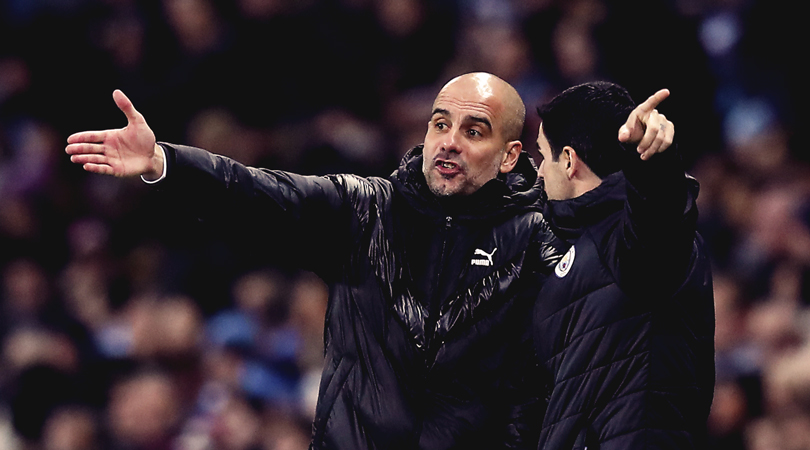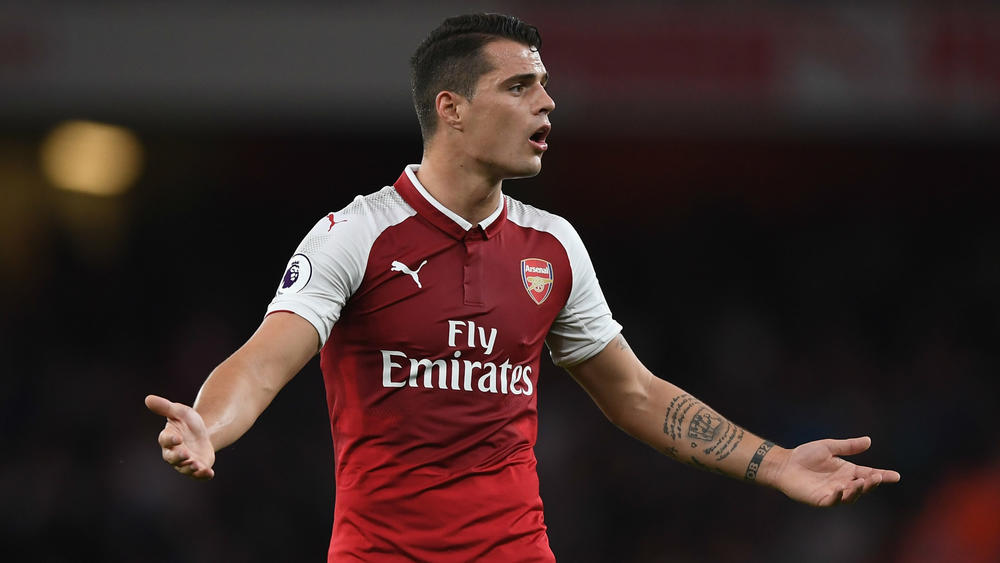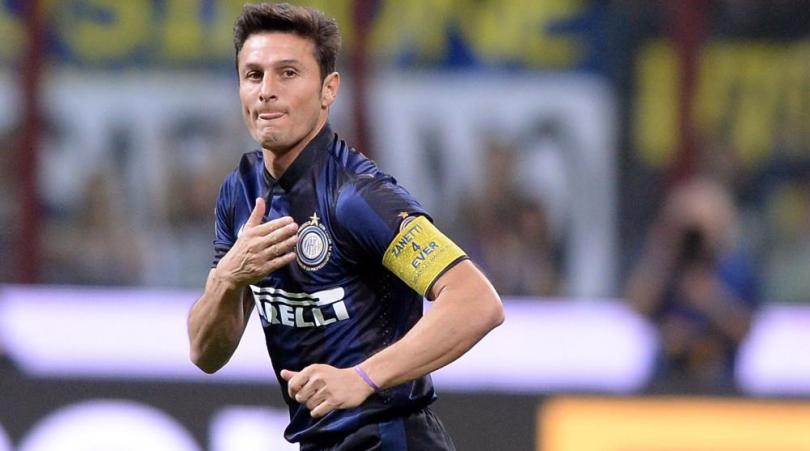5 tactical trends that could become more popular in the 2020s
Football is forever evolving - what styles will the teams of this decade play with?

It’s comforting, in a way, to know that everything in football shall come to pass. When Herbert Chapman first had the cunning plan to deploy a defender, it must have seemed like the W-M formation would live forever, yet here we are – 90 years and thousands of seemingly unbeatable teams later.
The good sides never last forever. Everything has been done in football and of course, necessity is the mother of invention. So what will be invented next? Or at least, rehashed from history during the 2020s?
Just as gegenpressing, inverted full-backs and compact 4-4-2s came back in vogue in the 2010s, the roaring '20s could provide another 10 years of fascinating tactical refreshes.
So what can we expect?
Chance creation from second balls
“No playmaker in the world can be as good as a good counterpressing,” Jurgen Klopp once said. Klopp should know more than most on that subject; he’s conquered English football by instilling his famous gegenpress at Anfield and done so without a traditional No.10.
In fact, Klopp hasn’t had a creative midfielder in the style of a Kevin de Bruyne or a Paul Pogba, even. While the Reds’ primary chance creation has come from the full-backs over the last few years, Liverpool have gone route one a lot more this season.
As Liverpool have evolved, Klopp’s side have hit a lot more up to Firmino as a means to get the ball up the pitch. An old-fashioned tactic, route one used to be extremely effective with a big man up top. Except Liverpool don’t really have that, either.
Get FourFourTwo Newsletter
The best features, fun and footballing quizzes, straight to your inbox every week.
Klopp’s tactic of using his pressing swarm to win second balls and create chances in the final third is something that few other teams have copied in the Premier League. The rest of the world has had to catch up with Klopp and Pep Guardiola on the pressing front – but with defending from the front now seen as a necessity rather than a luxury, it’s possible that a new version of route one football could become more popular in England now that the press is more familiar.
Marauding centre-backs
Do you trust your centre-back to dribble & drive to break lines?Olivier Aertssen, U16 Ajax@CoachingFamily @ItsYourGame @PeterPrickett @coachingbadges @ground_guru @GaryCurneen @TheEuropeanLad @ajaxlife @coachtonymee @BreakthruSoccer @BarcaWatch @Cruyff_Quotes @WayneHarrison9 pic.twitter.com/AEUaMIFklqDecember 27, 2019
A back four never used to be quite so compact. Sweepers and liberos meant that it was common to see a player step from central defence into midfield and orchestrate attacks. Ronald Koeman made a career from it.
Of course, it’s unheard of these days – in part thanks to the frontline of an attack pressing, but also due to players being able to dribble being used elsewhere on the field. It could be a very Koeman-esque kind of player who brings the libero, sweeper, false five - or whatever you want to call him - back into fashion, however.
Frenkie de Jong showed glimpses of being a dribbling centre-back at Ajax. De Jong frequently stepped out of the back four to run forward and dictate; though he’s not been used to that effect by Barcelona yet – or now-national boss Koeman – it’s an idea that Ajax are obviously teaching in their academy.
U17 prospect Olivier Aertssen has already caught attention online for his ability to “do the de Jong”. These kinds of defenders are adept at dropping a shoulder, disguising their passing angle and taking the ball deeper across the pitch, evading a press without needing to play out from the back.
Playing out from the back is now common in England – this is just the natural progression of a ball-playing centre-back. But, of course, it comes from Ajax.
Advanced full-backs
Famously, “no one grew up wanting to be Gary Neville”. Trent Alexander-Arnold and Andrew Robertson have somewhat bucked that trend, but they’re just the start of what this decade could have to offer.
At Arsenal under Mikel Arteta, Bukayo Saka has lit up the lefthand flank from a left-back position on paper, but he functions more like an inside forward when Pierre-Emerick Aubameyang tucks in from a winger role to a striker. Saka is covered by a more stringent structure than the one Unai Emery left behind, too. The lines between full-backs and wing-backs are blurring - Maurizio Sarri asked a lot of his full-backs too, and as the game moves on, more managers will follow suit.
Wingers moving to full-back are nothing new, though the likes of Alexander-Arnold, Saka and now Alphonso Davies at Bayern Munich suggest something deeper. Sure, Ashley Cole converted when he was younger, but this new breed of full-backs aren’t compromising the attacking side of their game, nor are they natural tacklers.
Managers are increasingly finding that fielding technically gifted footballers at right-back and left-back can have huge benefits if they’re covered by players elsewhere when they galavant forward. Instead of asking Saka to defend, Arteta has allowed other players to sit in his vacant position when Arsenal have the ball; likewise, Klopp has built a system in which Fabinho sits between the centre-backs, so that the right-sided centre back is spread wider to cover for Alexander-Arnold.
This is likely to only become more popular in the next ten years or so. The likes of Real Madrid and Barcelona have proved how important the full-back is to the modern game: just imagine if full-backs were to evolve even further.
Midfielder/full-back hybrids

As mentioned, necessity is the mother of invention. So what kind of player becomes necessary with the invention of a brand new kind of full-back?
At Arsenal, Granit Xhaka covers Bukayo Saka’s space, stepping out from midfield; at Manchester City, inverted full-backs are familiar, though City’s midfielders have shown in the past that they’re capable of dropping into full-back positions in order to disrupt opposition presses and move the ball easily through midfield.
Usually it’s a centre-back that covers a surging full-back or wing-back. But in the next ten years, more clubs could develop midfielders who do the job, given that wide-men are inverting and providing the creative impetus for their side.
The roles of an inverted full-back and a defensive midfielder in the modern game are similar. Assuming that full-backs evolve, the kinds of midfielders that could move into full-back positions would be physically-adept footballers who are positionally strong and good at distributing. You can probably name a couple from your club right now.
We could see more sides fielding combinations of midfielders and full-backs who can cover for each other in possession. This could be the best way of keeping strength and structure in midfield, while fielding technically gifted wide full-backs who function like wingers, outside of inverted wide-men.
Dual-10 systems
The No.10 role has all but vanished from football as the physicality of the game has stepped up a notch. Gone are the languid playmaker-types, the Ozils and Riquelmes of the world, replaced by a hardened, more defensively-solid No.8.
Managers found that some of these shuttling box-to-box players could be capable creatively, but more often than not, creation has shifted out wide; both from full-backs crossing into the centre, but also inverted wingers who drift inside.
At Rangers, Steven Gerrard stumbled upon a solution to his side’s lack of creation, beginning to field two No.10s more centrally on the pitch, in an extremely narrow 4-3-3 of sorts. It’s similar to the style that Mauricio Pochettino favoured at Tottenham, when he would rely on Christian Eriksen on the right and Son Heung-min on the left, with full-backs overlapping.
With full-backs venturing higher, midfielders becoming far tougher and deep blocks becoming even harder to pick, don’t bet against more sides fielding two playmakers centrally - even City have done it with de Bruyne and Silva, though coming from no.8 positions.
Penning the opposition in like this could be a more reliable solution against defences who are better at clearing crosses.
While you're here, why not take advantage of our brilliant new subscribers' offer? Get 5 copies of the world's greatest football magazine for just £5 – the game's greatest stories and finest journalism direct to your door for less than the cost of a London pint. Cheers!
NOW READ...
INTERVIEW How do you deal with being the most sought-after teenager in the world? Erling Haaland scores goals
LIVERPOOL The best right-back in the world? How Trent Alexander-Arnold is reinventing the full-back
QUIZ Can you name the top 50 clubs according to UEFA coefficient?

Mark White has been at on FourFourTwo since joining in January 2020, first as a staff writer before becoming content editor in 2023. An encyclopedia of football shirts and boots knowledge – both past and present – Mark has also represented FFT at both FA Cup and League Cup finals (though didn't receive a winners' medal on either occasion) and has written pieces for the mag ranging on subjects from Bobby Robson's season at Barcelona to Robinho's career. He has written cover features for the mag on Mikel Arteta and Martin Odegaard, and is assisted by his cat, Rosie, who has interned for the brand since lockdown.
